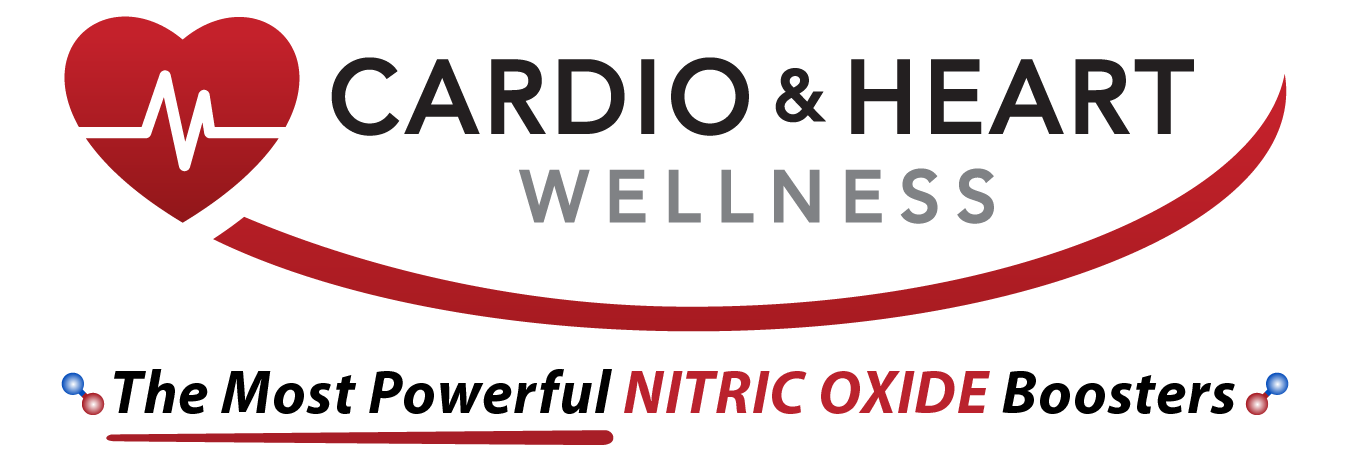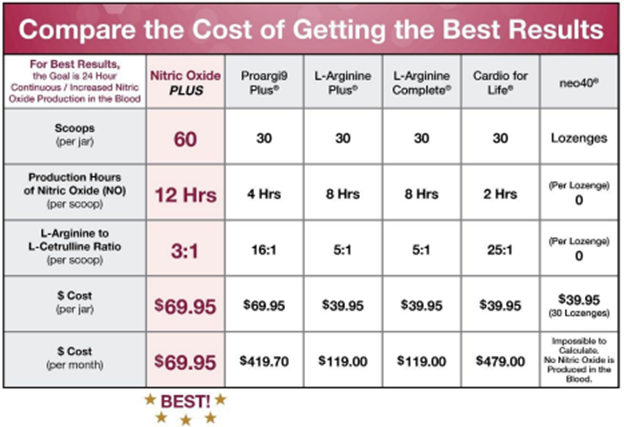Choosing the Right Nitric Oxide Supplement
Introduction
Choosing the right Nitric Oxide supplement often confuses consumers due to the variety available. With a background in sales and mentorship under Dr. Rainer Boger, MD, who has conducted extensive arginine/Nitric Oxide research for over 30 years, I can simplify this decision. My advice is based on solid research endorsed by the National Institute of Health (NIH). Dr. Boger ranks among the top experts in this field according to Expertscape.com.
Sources of Nitric Oxide
Nitric Oxide supplements derive from two main sources:
A. Arginine-Rich Foods – Arginine acts as a precursor to Nitric Oxide. Although many foods provide arginine, the required amount (5000 mg daily) for optimal Nitric Oxide production is typically impractical due to high caloric intake. Dr. Boger highlights the financial and caloric costs of achieving this level through diet alone. Studies supported by the NIH confirm that 90% of Nitric Oxide is synthesized from arginine, underscoring its critical role, recognized by the 1998 Nobel Prize in Medicine.
B. Nitrates from Foods – Nitrates convert to Nitrites, offering an alternative Nitric Oxide synthesis pathway. This method, however, yields only about 7.5-8.5% of the necessary Nitric Oxide. Foods like beetroot and spinach contribute nitrates to this process. Despite some products claiming to contain 500 mg of nitrates, the actual nitrate yield per gram is only 7.5-8.5 mg due to a 1.5% nitrate concentration in beetroot, which is inadequate for the body’s needs.
Practical Example – Consider this scenario for clarity:
- A product claims to increase Nitric Oxide effectively with 500 mg of beetroot extract.
- However, achieving the 450 mg of nitrates necessary for beneficial Nitric Oxide levels requires approximately 30,000 mg (30 grams) of beetroot extract. Consuming 30 grams daily is excessive and can even change the color of your urine to purple/red.
Nutritional and Financial Considerations for Nitric Oxide Production
Nutritional Challenges
Meeting daily Nitric Oxide requirements through diet alone presents significant challenges due to high calorie and arginine demands. The table below illustrates the arginine content in various foods and their associated calorie intake. For instance, consuming 582 grams of Edam cheese provides the necessary 6g of L-arginine but far exceeds daily caloric needs. Regular reliance on such foods for sufficient L-arginine becomes impractical, highlighting the advantages of a dietary supplement like Nitric Oxide Plus, which offers the required dose at just 30 calories.
Caloric and Arginine Content in Common Foods
Food |
L-arginine(mg/100g) |
Grams needed to have a supply of 6 g L-arginine/day |
Kcal/100g |
Total kcalper day |
| Pumpkin seeds | 5,353 | 112 | 446 | 500 |
| Peanuts | 3,460 | 173 | 567 | 981 |
| Almonds | 2,750 | 218 | 576 | 1,256 |
| Pine nuts | 2,413 | 249 | 673 | 1,676 |
| Lentils | 2,240 | 268 | 116 | 311 |
| Hazel nuts | 2,030 | 296 | 628 | 1,859 |
| Prawns | 1,740 | 345 | 87 | 300 |
| Beef steak | 1,540 | 390 | 250 | 975 |
| Chicken breast | 1,350 | 444 | 165 | 733 |
| Salmon | 1,330 | 450 | 188 | 846 |
| Edam cheese | 1,030 | 582 | 357 | 2,078 |
| Buckwheat | 970 | 619 | 343 | 2,123 |
| Eggs | 840 | 715 | 155 | 1,107 |
Cost Implications The financial aspect of achieving daily L-arginine levels through diet also becomes prohibitive. Below is a comparison of monthly costs for consuming the required amounts of various foods compared to using supplements.
Comparison with Supplements
In contrast, Nitric Oxide Plus offers a more calorie-efficient solution. A daily dose of 6 grams of L-arginine from this supplement contributes only about 30 calories, enhancing dietary flexibility and simplifying nutrient intake. This stark difference highlights the benefits of supplementing over adjusting diets, especially when considering the caloric and practical limitations of natural sources.
Monthly Costs Analysis
Financial considerations also play a crucial role in choosing Nitric Oxide sources. Here is a breakdown of monthly costs associated with various natural sources versus supplements:
- Pumpkin seeds: $65
- Peanuts: $35
- Raw almonds: $94 (4 lbs/day)
- Pine nuts: $485
- Lentils: $36
- Hazel nuts: $240
- Shrimp: $244 (0.63 lbs/day)
- Beef steak: $253 (3/4 lb/day)
- Chicken breast: $107 (3/4 lbs/day)
- Salmon: $297 (1 lb/day)
- Edam cheese: $381 (1.6 lbs/day)
- Buckwheat: $122
- Eggs: $157 (12 eggs/day)
Supplement Costs
- Nitric Oxide Plus: $69.95 per month ($2.30/day)
- Cardio Wellness: $84.95 per month ($2.66/day)
- Heart Wellness: $89.95 per month
The caloric intake from these foods averages between 311 and 2000 calories daily, averaging 1000 calories/day. In comparison, the supplements maintain a consistent low-calorie level of 30 per day.
This section emphasizes not only the dietary efficiency of supplements like Nitric Oxide Plus but also their cost-effectiveness when compared to natural food sources, which can be significantly more expensive and less practical for daily consumption.


